NOTES
Sunday, July 8, 2007
07:20
Still, quiet, white sky
Birds In Order of Appearance:
1. mwbw (Checkers)
2. unbanded
3. mbrg (Trapper)
4. morgo (Mr. Go)
5. morlb (Red Eye)
6. mlbob (Mrs. Go)
7. unbanded (Shopper aka Chopper)
8. mwlblb (Tame Bird)
9. unbanded juvenile
10. lbpmp (Princesa)
11. unbanded (Rusty Bill)
12. mbow (Bow)
13. banded juvenile (Plum)
14. mwrg (Wringer)
15. mwrr (Droopy)
Notes:
Upon rising each morning, I brew my coffee, then feed the birds. I make three to four piles of wild bird seed, a pile of sunflower seeds, and piles of peanuts. Then I sit on the deck and shell a few nuts for myself. There is something satisfying about sharing peanuts with the birds at the beginning of my day. Usually Mr. Go, Tame Bird, Shopper, and more recently, Red Eye, are first to greet me in a flurry of activity. Tame Bird and Red Eye show little fear and will come close to me, daring each other to get the first peanut. Mr. Go stalls until I move farther away, but holds his ground, clearly in charge of who comes and goes here. This morning, Checkers and an unbanded were sitting very quietly in the tree above me, hidden by foliage. There was a lull before the usual crowd joined me.
Shopper is turning into a tyrant. Unlike the other birds who tolerate the youngsters, he frightened a juvenile working to open a peanut. A speed demon with crest slicked back, Chopper is a more suitable moniker. The young bird struggled to first open the nut, not yet able to stabilize it with his toes, nor able to apply the necessary force with its bill. Once he got it open he grabbed the whole peanut and swallowed it whole. Much too big a bite, I watched the bulge of nut travel down his gullet. More careful with the second nut, he pecked it into smaller pieces. He has yet to develop the skill of balancing a nut on a tree branch while gaining access to the other half, so uses the flat platform of the bench.
Still, quiet, white sky
Birds In Order of Appearance:
1. mwbw (Checkers)
2. unbanded
3. mbrg (Trapper)
4. morgo (Mr. Go)
5. morlb (Red Eye)
6. mlbob (Mrs. Go)
7. unbanded (Shopper aka Chopper)
8. mwlblb (Tame Bird)
9. unbanded juvenile
10. lbpmp (Princesa)
11. unbanded (Rusty Bill)
12. mbow (Bow)
13. banded juvenile (Plum)
14. mwrg (Wringer)
15. mwrr (Droopy)
Notes:
Upon rising each morning, I brew my coffee, then feed the birds. I make three to four piles of wild bird seed, a pile of sunflower seeds, and piles of peanuts. Then I sit on the deck and shell a few nuts for myself. There is something satisfying about sharing peanuts with the birds at the beginning of my day. Usually Mr. Go, Tame Bird, Shopper, and more recently, Red Eye, are first to greet me in a flurry of activity. Tame Bird and Red Eye show little fear and will come close to me, daring each other to get the first peanut. Mr. Go stalls until I move farther away, but holds his ground, clearly in charge of who comes and goes here. This morning, Checkers and an unbanded were sitting very quietly in the tree above me, hidden by foliage. There was a lull before the usual crowd joined me.
Shopper is turning into a tyrant. Unlike the other birds who tolerate the youngsters, he frightened a juvenile working to open a peanut. A speed demon with crest slicked back, Chopper is a more suitable moniker. The young bird struggled to first open the nut, not yet able to stabilize it with his toes, nor able to apply the necessary force with its bill. Once he got it open he grabbed the whole peanut and swallowed it whole. Much too big a bite, I watched the bulge of nut travel down his gullet. More careful with the second nut, he pecked it into smaller pieces. He has yet to develop the skill of balancing a nut on a tree branch while gaining access to the other half, so uses the flat platform of the bench.
Subscribe to:
Post Comments (Atom)
Pia Sets the Trap
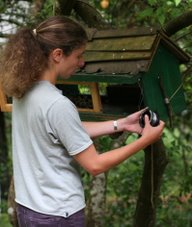
07/24/07
Peaking...
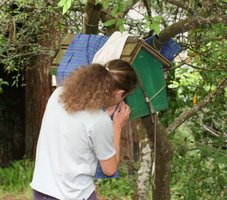
07/24/07
Oops, wrong bird!
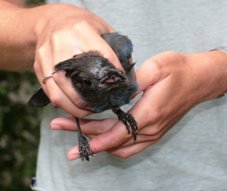
Demonstrating the "hold"
Try Again
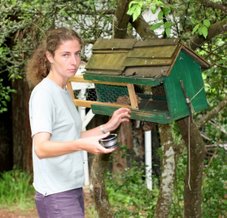
Bird in the Bag

Applying a metal band
Measuring

and more measuring. . . .
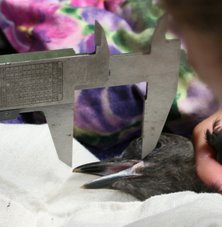
Blood Sampling
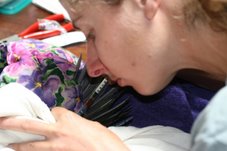
Jeff J's Work

Pia's test tube holder
Weighing

And then....release
When the sun goes down...
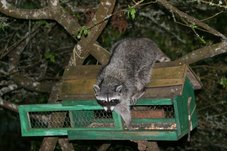
Steller's Jay Taxonomy/Description
Common Name: Steller's Jay
Class: Aves
Order: Passeriformes
Family: Corvidae
Genus: Cyanocitta
Species: Cyanocitta stelleri
Steller’s jay belongs to the family, Corvidae, in the Avian Order Passeriformes. Passeriformes is the order of perching birds. Corvidae is the jay, magpie and crow family. The Steller's jay's scientific name is Cyanocitta stelleri. The generic name, cyanocitta, means "blue jay". Its specific name, stelleri, named for George W. Steller (1709-1746). Steller was a German zoologist who explored the coastal areas of the northern Pacific Ocean in 1740.
Band Colors
black | white | purple | red | orangeBands are read in the following order:
light blue and light blue | green
Note: Light blue is difficult to read. It darkens with age, resembling a green band. (b/w/p/r/o/lb/g)
right bottom band
right top band
left bottom band
left top band
Data Collecting
This information was copied from the website of Dr. Jeff Black, Humboldt State University Wildlife Department.
The data to include for each record:
- Bird’s color code
- Size of social group seen at the same time
- Associates’ color codes (or if unbanded = UNB; or not determined = NOTD)
- Number of times associates came within 3 meters of each other
- Approximate time spent within 3 meter distance (e.g. 2 seconds, 15 sec, etc.)
- Total time you watched the birds (e.g. 5 minutes, 10 min, etc.)
- Time of day; start of observation (e.g. 1935)
- Date (e.g. 9.30.99)
- Location of observation (e.g. Rewood Bowl SW corner west bleachers. And state whether the bird was seen at a birdfeeder or in trees, etc)
- Comments (e.g. deformed leg, feather tuft on back, etc.)
Arcata Steller's Jay Sightings
Mr. Go
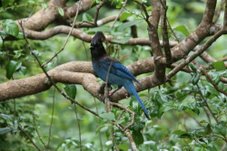
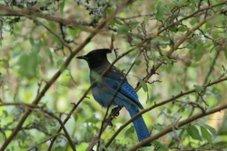
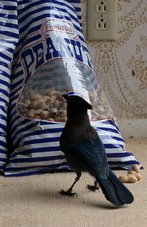
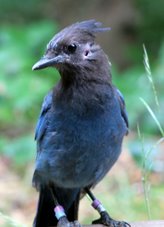
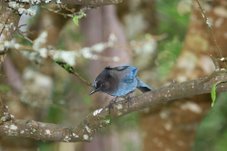
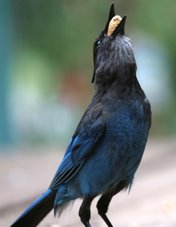
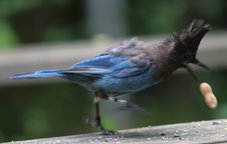
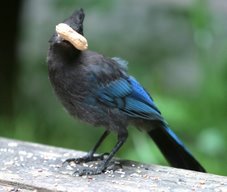
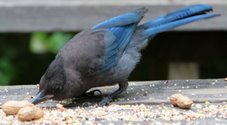
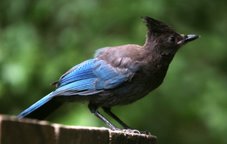
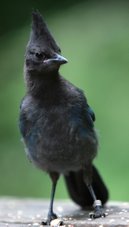

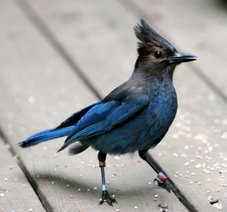
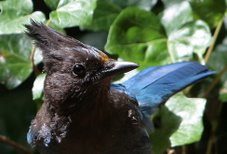
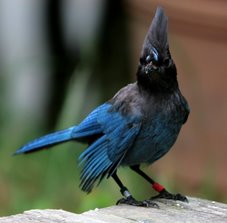
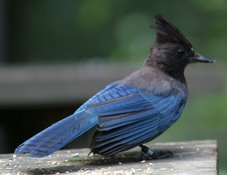
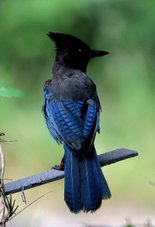
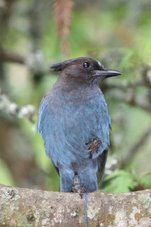
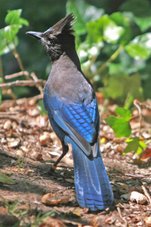
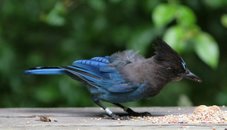
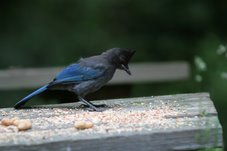
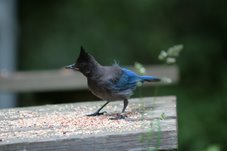
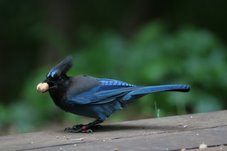
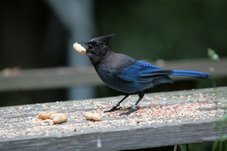
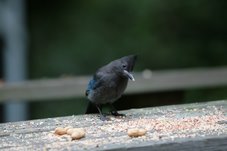
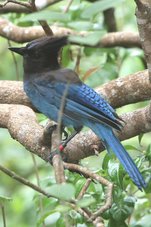
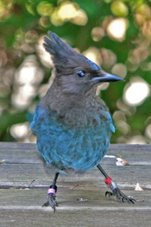
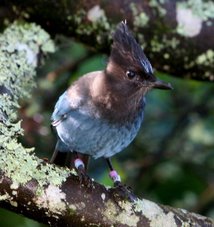
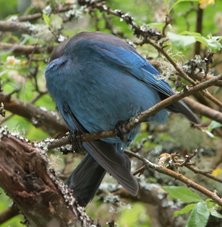
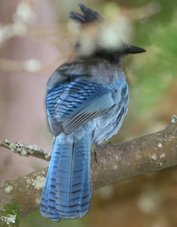
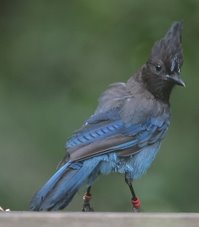
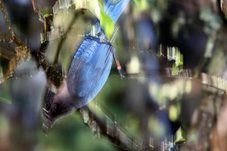
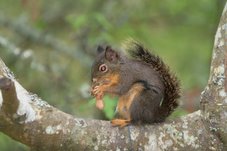
No comments:
Post a Comment